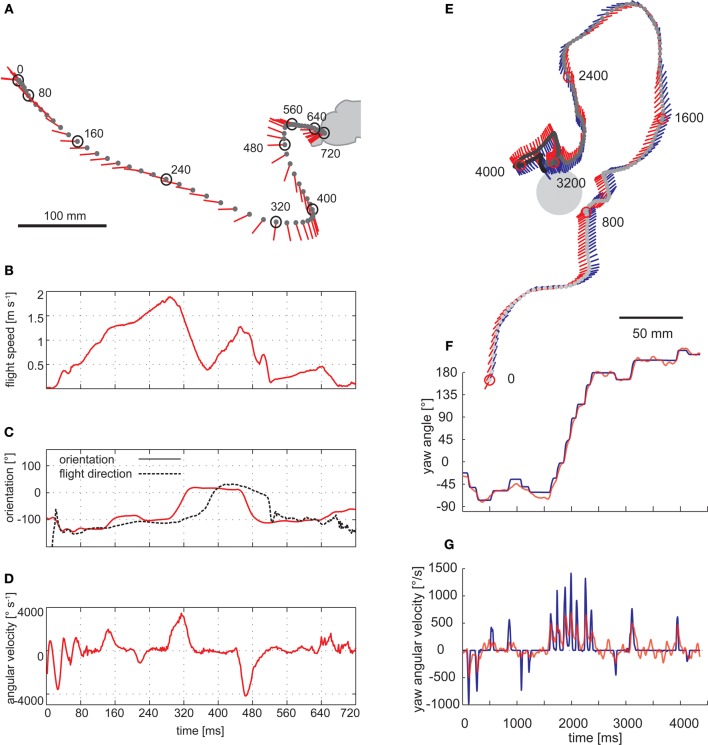Figure 3.
Saccadic flight and gaze strategy of free-flying blowflies and honeybees. (A) Sample flight trajectory of a blowfly as seen from above. The position of the fly (black dot) and the orientation of the longitudinal body axis (red line) are shown every 10 ms. The trajectory was filmed outdoors: the fly took off from a perch and landed on a leaf of a shrub. (B) Translational flight speed. (C) Orientation of the fly's longitudinal body axis (solid red line) and flight direction (broken black line) in the external coordinate system. (D) Angular velocity of the fly. The fly changed its gaze and heading direction through a series of short and fast body turns. Flight direction and body axis orientation frequently deviate: the body axis already points in the new flight direction while the fly is continuing to move on its previous course. (A–D) Data from Boeddeker et al. (2005). (E) Top view of a flight of a honeybee eventually landing on a feeder. The position of the bee's head (gray dot) is shown every 16 ms. The orientation of the head (blue line) and body (red line) can deviate considerably. (F) Head (blue) and body orientation (red). The head usually turns with the thorax but at a higher angular speed, starting, and finishing slightly earlier. (G) Head (blue) and body (red) angular velocity. (E–G) Data from Boeddeker et al. (2010).

